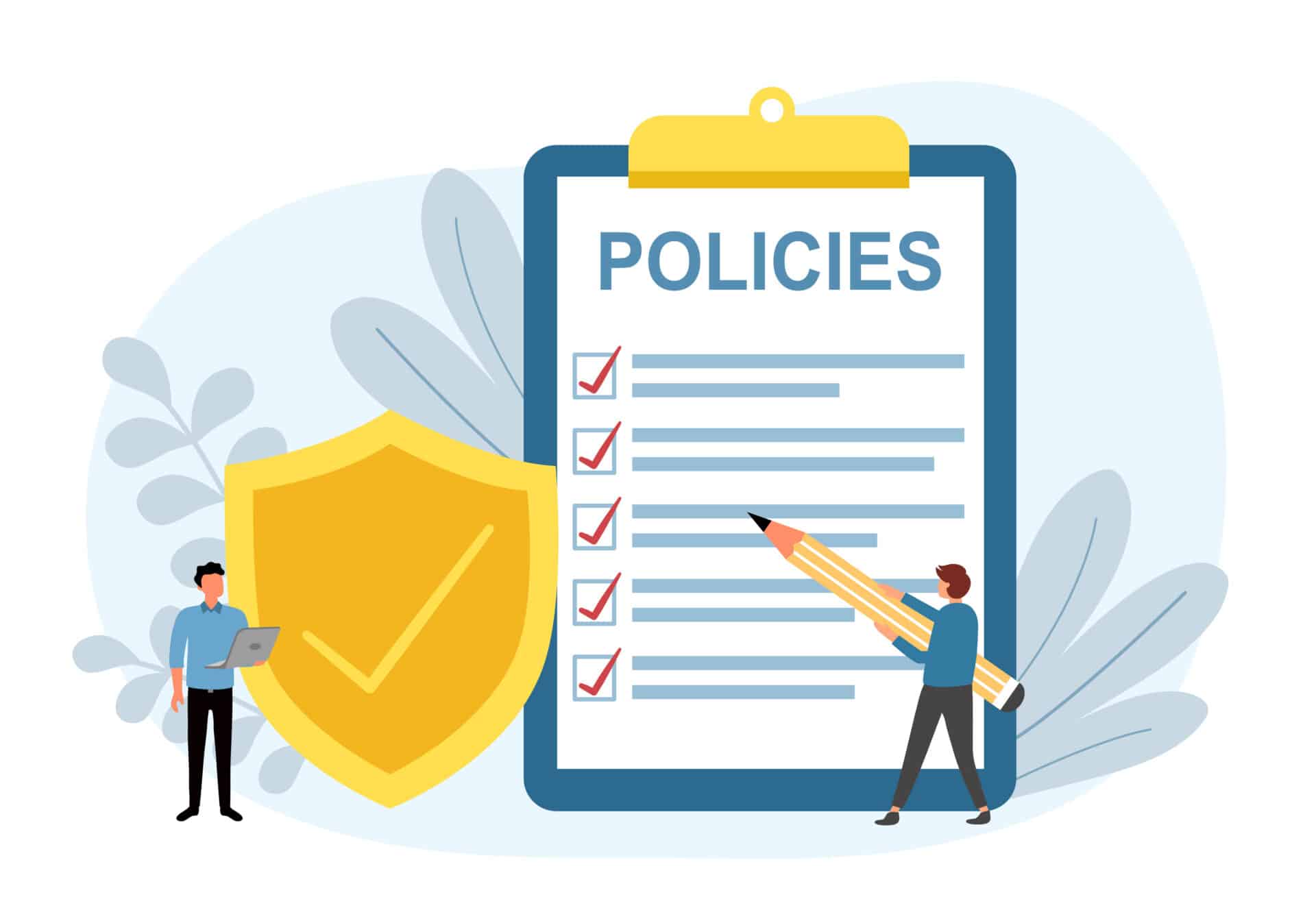
Why Boring IT Policies Are Essential for IT Security and Compliance
Why Do We Even Need IT Policies?
The normal reaction when people start talking about IT policies is to yawn and look away hoping that someone else will take care of it. But you really shouldn\'t as they underpin almost everything your business does when using technology, ignore them at your peril.
Information Technology (IT) serves as the backbone of most business operations. IT policies, including those for IT security and data privacy, are not merely guidelines but a blueprint that ensures the seamless functioning and security of the business infrastructure. They are instrumental in:
- Business Continuity: Having robust IT policies means that your business is better prepared to deal with unexpected adversities. They ensure that the crucial business operations continue to function in the face of IT-related disruptions.
- Legal Compliance and Liability: IT compliance policies with regional and international legal frameworks is non-negotiable. Well-crafted IT policies help in navigating the complex regulatory environment, thus reducing the liability that the business might incur due to non-compliance.
- Security and Data Privacy: The importance of IT security policies and implementing a solid data privacy policy cannot be overstated. IT security policies are crucial in safeguarding an organisation’s sensitive data against potential threats, ensuring the integrity and confidentiality of information.
Key IT Policies and Their Components
Information Security Policy
- Asset Management:
- Asset Identification: Develop a process for identifying and documenting all IT assets, including hardware, software, and data.
- Classification: Classify assets based on their criticality and sensitivity, e.g., confidential, internal use, public.
- Handling Requirements: Define handling requirements for each classification, including storage, access, and disposal protocols.
- Access Control:
- User Access Management: Implement strict procedures for user account creation, modification, and deletion, ensuring role-based access control (RBAC).
- Authentication: Enforce multi-factor authentication (MFA) for accessing sensitive systems and data.
- Logging and Monitoring: Continuously monitor access logs to detect and respond to unauthorized access attempts.
- Incident Response Procedures:
- Preparation: Establish an incident response team and provide regular training.
- Identification and Classification: Develop a system for quickly identifying and classifying incidents based on severity.
- Containment and Eradication: Define steps to contain the threat and eradicate malicious activities.
- Recovery and Lessons Learned: Outline procedures to restore operations and conduct post-incident analysis to improve future response.
Remote Work and BYOD IT Policy (Bring Your Own Device)
- BYOD Security Policies:
- Device Enrollment: Require all personal devices used for work to be enrolled in the company’s mobile device management (MDM) system.
- Data Encryption: Enforce encryption of data at rest and in transit on all BYOD devices.
- Security Updates: Mandate regular updates to the operating systems and applications to patch vulnerabilities.
- Device Management:
- Device Monitoring: Implement remote monitoring to detect potential security threats on personal devices.
- Remote Wipe Capability: Ensure the ability to remotely wipe company data from lost or stolen devices.
- Usage Restrictions: Define acceptable use policies to limit the types of applications and services that can be accessed from BYOD devices.
- Data Access Control:
- VPN Requirements: Require the use of a virtual private network (VPN) when accessing company systems from remote locations.
- Conditional Access: Implement conditional access policies that allow or block access based on device compliance status.
- Data Segmentation: Use containerization to separate company data from personal data on BYOD devices.
Disaster Recovery and Business Continuity Policies:
- Recovery Point Objectives (RPO): Define the maximum acceptable amount of data loss measured in time (e.g., last 24 hours of data).
- Recovery Time Objectives (RTO): Set the maximum acceptable length of time that a system can be offline before it must be restored.
- Recovery Strategies:
- Data Backup: Establish regular automated backups of critical data and systems, stored securely offsite or in the cloud.
- Redundancy: Implement redundant systems and infrastructure to ensure availability during an outage.
- Alternate Worksites: Identify and maintain alternate work locations in case the primary site becomes unavailable.
- Testing Procedures:
- Regular Drills: Conduct regular disaster recovery drills to test the effectiveness of recovery plans and make necessary adjustments.
- Plan Review and Update: Review and update the disaster recovery plan at least annually, or after any significant changes to the IT environment.
- Post-Test Reporting: Produce detailed reports after each test, documenting successes, failures, and areas for improvement.
Updating and Enforcing IT Security Policies
- Regular Reviews and Updates: Discuss the necessity of regularly reviewing and updating IT policies (such as IT security and BYOD policies) to ensure they remain relevant and effective in an ever-evolving technological landscape.
- Training and Awareness: Stress on the importance of educating employees on these policies and the role they play in the larger scheme of things.
- Monitoring and Enforcement: Explain how a lack of enforcement could render even the most well-crafted policies ineffective, and suggest ways to ensure compliance.
Industry-Specific and Regulatory Mandated Policies:
Different industries, jurisdictions or regulatory environments necessitate specific IT security policies. For instance, healthcare organisations need to adhere to Health Insurance Portability and Accountability Act (HIPAA) regulations, while companies operating in the European Union need to comply with General Data Protection Regulation (GDPR), PDPO in Hong Kong, PIPL in China, DSL in China and many more.
Take Note
The narrative that IT policies are dull and unimportant is a dangerous fallacy. These policies are a cornerstone for managing IT resources, ensuring security, and fostering a culture of accountability and legal compliance within an organisation. By investing time and resources in developing, updating, and enforcing sound IT policies, businesses are not just complying with legal mandates but are building a solid foundation for long-term success and sustainability in the digital age.
If you need help or advice related to this topic please get in touch with us here